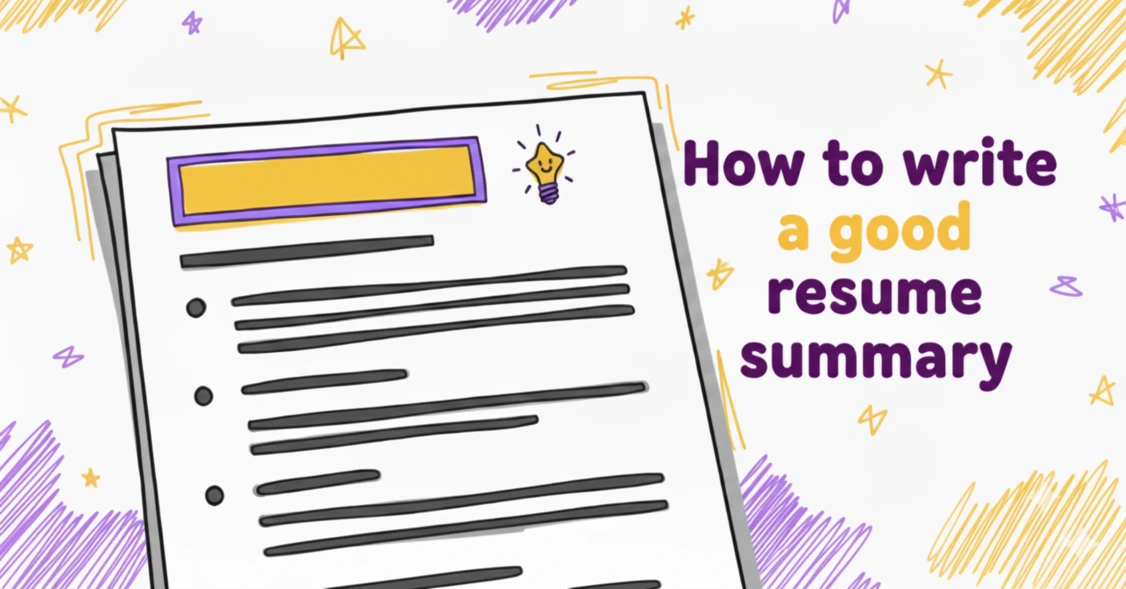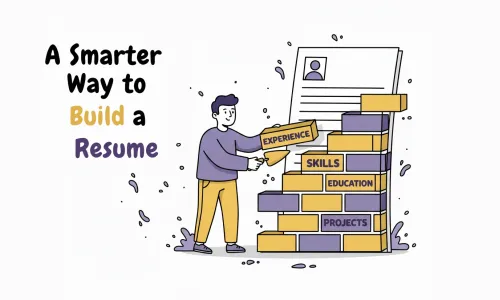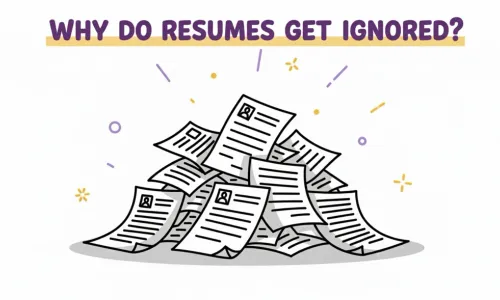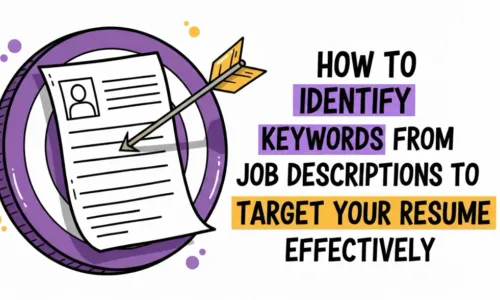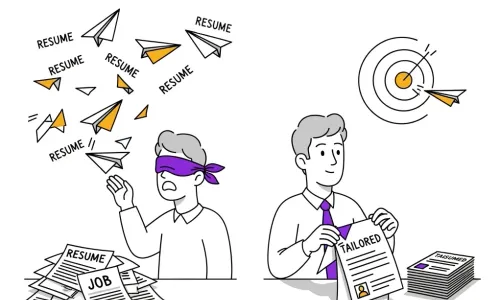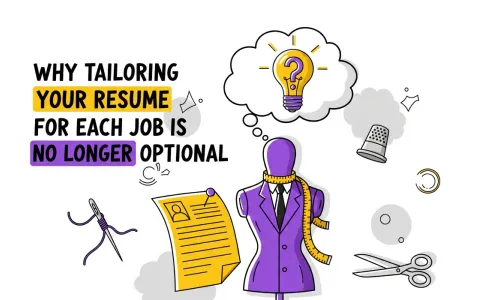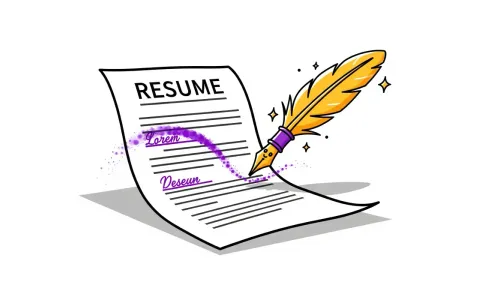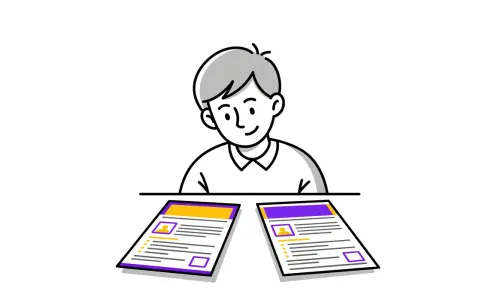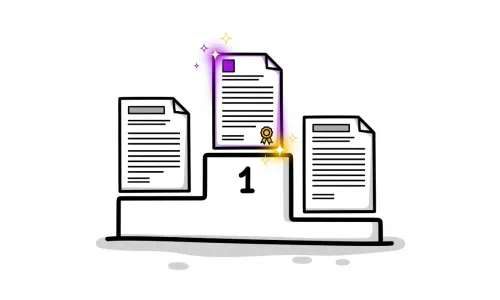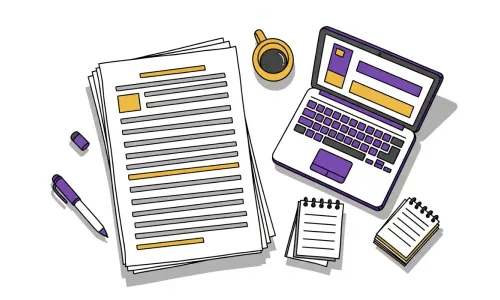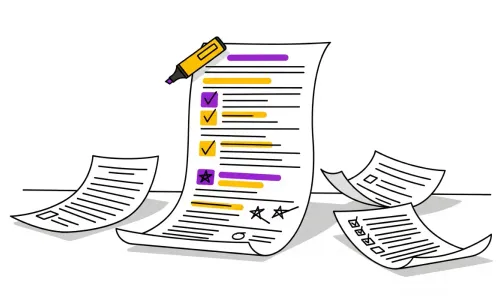Why a Generic CV Gets Ignored
You’ve spent hours polishing your CV, highlighting your skills and experience. You send it out to dozens of job applications, feeling confident and hopeful. But then… silence. If this sounds familiar, you’re not alone. The truth is, in today’s competitive job market, a generic, one-size-fits-all CV is often destined for the digital slush pile.
The Problem with One-Size-Fits-All CVs
Think of a hiring manager’s perspective. They receive hundreds, sometimes thousands, of CVs for a single open position. They don’t have time to read each one from top to bottom. Instead, they scan for specific keywords and qualifications that match the job description. If your CV doesn’t immediately show that you’re a good fit, it’s likely to be passed over. To learn more about this, read our article on why most CVs are invisible in 2025.
Adding to the challenge, many companies now use Applicant Tracking Systems (ATS) to filter through CVs. These systems are programmed to look for specific keywords and phrases related to the job. If your CV isn’t optimised for the ATS, it may never even reach a human reader.
This is where a targeted CV comes in. A targeted CV is a CV that has been customised to a specific job description. It’s a powerful tool that can help you get past the ATS, grab the attention of hiring managers, and ultimately, land more interviews.
What is a Targeted CV Profile?
If your CV is a film, the targeted CV profile is the trailer. It’s a short, powerful statement at the top of your CV that gives hiring managers a sneak peek of your skills and experience. It’s your 30-second elevator pitch, designed to pique their interest and make them want to learn more about you.
A targeted CV profile is even more powerful. It’s a summary that has been specifically tailored to the job you’re applying for. It highlights the skills and experience that are most relevant to the position, and it uses the same language and keywords as the job description.
Think of it this way: a generic CV profile is like a generic greeting card. It’s nice, but it doesn’t feel personal or special. A targeted CV profile, on the other hand, is like a handwritten note. It shows that you’ve taken the time to understand the job and that you’re genuinely interested in the position.
How to Write a Targeted CV Profile in 4 Simple Steps
Ready to write a targeted CV profile that gets results? Here’s a simple, four-step process you can follow.
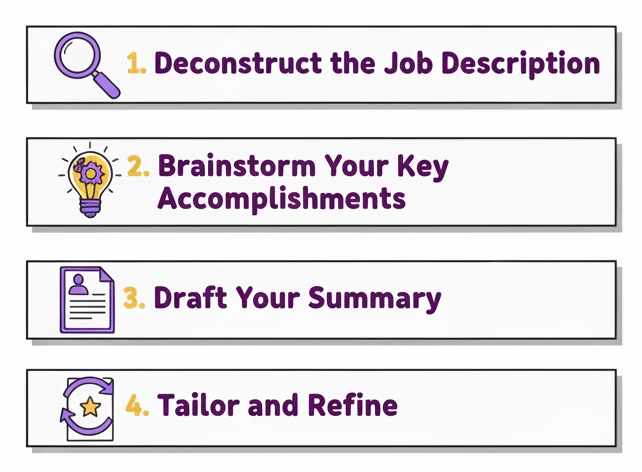
Step 1: Deconstruct the Job Description
The first step is to carefully read the job description and identify the key keywords, skills, and qualifications the employer is looking for. Pay close attention to the “Requirements” and “Responsibilities” sections. What are the must-have skills? What kind of experience is required? Make a list of these keywords and phrases.
For example, let’s say you’re applying for a marketing manager position. The job description might include keywords like “SEO,” “content marketing,” “social media,” and “Google Analytics.” These are the keywords you’ll want to include in your CV profile.
Step 2: Brainstorm Your Key Accomplishments
Once you know what the employer is looking for, it’s time to brainstorm your own skills and experience. Think about your most impressive accomplishments and how they relate to the job description. Have you increased sales? Improved efficiency? Managed a successful project?
Whenever possible, use quantifiable data to showcase your achievements. For example, instead of saying “Managed a team,” you could say “Managed a team of 5 developers.”
Here are a few more examples of quantifiable achievements:
- Instead of “Responsible for social media,” say “Grew social media following by 25% in 6 months.”
- Instead of “Helped to improve customer satisfaction,” say “Increased customer satisfaction rating from 85% to 95%.”
- Instead of “Wrote blog posts,” say “Wrote 10 blog posts that generated over 100,000 pageviews.”
Step 3: Draft Your Profile
Now it’s time to put it all together. A good CV profile is typically 2-3 sentences long and includes the following:
- Sentence 1: Your professional title and years of experience.
- Sentence 2: Your top 2-3 skills and how they align with the job.
- Sentence 3: A key accomplishment that demonstrates your value.
Here’s a simple formula you can use:
- Your Professional Title with Number years of experience in Your Industry. Proven ability to Your Top 2-3 Skills. A Key Accomplishment that Demonstrates Your Value.
Step 4: Tailor and Refine
Once you have a draft of your profile, it’s time to tailor it to the specific job you’re applying for. This is where you’ll incorporate the keywords and phrases you identified in Step 1. Read your profile aloud to make sure it sounds natural and confident. It should be a powerful statement that makes the hiring manager want to learn more about you. You can also use a free AI CV rewriter to help you with this step.
Targeted CV Profile Examples
Let’s take a look at a few examples of targeted CV profiles in action.
Example 1: Career Changer
Before (Generic):
- “Experienced professional looking for a new opportunity.”
After (Targeted):
- “Highly motivated and results-oriented professional with 5+ years of experience in customer service. Seeking to leverage my skills in communication and problem-solving to transition into a career in human resources. Proven ability to resolve customer issues and improve satisfaction rates.”
Example 2: Recent Graduate
Before (Generic):
- “Recent graduate with a degree in marketing. Eager to learn and grow in a fast-paced environment.”
After (Targeted):
- “Recent marketing graduate with a passion for social media and content creation. Skilled in creating engaging content for a variety of platforms, including Instagram, TikTok, and Twitter. Seeking to apply my knowledge of social media marketing to help a mission-driven company grow its online presence.”
Example 3: Experienced Professional
Before (Generic):
- “Experienced software engineer with a background in a variety of programming languages.”
After (Targeted):
- “Senior Software Engineer with 10+ years of experience in developing and deploying high-performance web applications. Expert in Java, Python, and AWS. Proven ability to lead and mentor junior engineers, and to deliver projects on time and on budget.”
Now that you’ve seen some examples of targeted CV profiles and learned what to avoid, you might be wondering how a CV profile differs from a cover letter. Let's break it down.
CV Profile vs. Cover Letter: What's the Difference?
It’s a common question: what’s the difference between a CV profile and a cover letter? And do you need both?
| Feature | CV Profile | Cover Letter |
|---|---|---|
| Purpose | Provide a concise overview of skills, experience, and achievements | Explain motivation, context, and why you’re the right fit for the role |
| Length | 2–4 sentences or a short paragraph | Typically 3–5 paragraphs, up to one page |
| Content | Highlights qualifications and career highlights | Expands on experience, career goals, and alignment with the company |
| Tone | Direct, factual, and easy to scan quickly | More personal, narrative, and persuasive |
| Placement | At the top of a CV, right below your name and contact information | Separate document or text box, often submitted with the CV |
Think of it this way: your CV profile is the “what” and your cover letter is the “why.” Your CV profile is a short, concise overview of your skills and experience, designed to be scanned quickly. Your cover letter is a more detailed document that allows you to tell your story and explain why you’re the perfect candidate for the job.
In most cases, you need both. A strong CV profile gets you past the initial scan and piques the hiring manager's interest, while the cover letter seals the deal.
When You Might Not Need a CV Profile
While a CV profile is a powerful tool, there are a few situations where it might not be necessary.
- If the application specifically asks you not to include one. Some companies have very specific application instructions, and it’s always best to follow them to the letter.
- If you’re creating an academic CV. Academic CVs are typically much longer and more detailed than a standard CV, and they don’t usually include a profile.
- If you’re a very recent graduate with little to no experience. In this case, you might be better off using a CV objective, which is a short statement that focuses on your career goals.
However, for the vast majority of job seekers, a targeted CV profile is an essential tool that can help you stand out from the competition and land your dream job.
Take Your CV to the Next Level
Writing a targeted CV profile for every job application can be time-consuming, but it’s one of the most effective ways to increase your chances of getting an interview. But what if you could automate the process?
With Reztune, you can. Our AI-powered CV builder helps you tailor your CV to any job description and create a targeted profile in minutes. Simply upload your CV and a job description, and our AI will do the rest. It will analyse the job description, identify the key keywords and skills, and then rewrite your CV to match. It will also generate a powerful, professional profile that is tailored to the specific job you’re applying for.
Ready to create a CV that gets results? Try Reztune for free today!.
Stop Guessing, Start Targeting
Don't let your CV get lost in the shuffle. With a targeted CV profile, you can make a powerful first impression and show hiring managers that you're the right person for the job. And with Reztune, it's easier than ever to create a CV that is perfectly tailored to your dream job.
Ready to land more interviews? Sign up for Reztune today!
Frequently Asked Questions (FAQ)
How do I make a targeted CV?
To make a targeted CV, start by carefully reading the job description to identify the key requirements. Then, tailor your CV to highlight the skills and experience you have that match those requirements. This may involve rewriting your CV profile, adjusting your work experience bullet points, and adding a skills section that is relevant to the job.
What if I have no experience in the field I’m applying for?
Even if you don’t have direct experience, you can still create a powerful targeted CV profile. Focus on your transferable skills, such as communication, problem-solving, and teamwork. You can also highlight relevant coursework, volunteer work, or personal projects that demonstrate your abilities.
Where can I find targeted CV examples?
You can find targeted CV examples in this article. We have provided examples for a career changer, a recent graduate, and an experienced professional. You can also find many examples online by searching for “targeted CV examples” for your specific industry or role.
What is the best CV template to use?
The best CV template is one that is clean, professional, and easy to read. It should also be optimised for Applicant Tracking Systems (ATS). Look for a template with a clear hierarchy, a simple font, and plenty of white space. Avoid templates with excessive graphics, colours, or columns, as these can be difficult for ATS to parse.
How do I ensure my CV aligns with the job?
To ensure your CV aligns with the job, you need to customise it for each application. This means using the same keywords and language as the job description, highlighting your most relevant skills and experience, and tailoring your CV profile to the specific role. A CV builder like Reztune can help you with this process.
How does a targeted CV help my job search?
A targeted CV helps your job search by making it clear to hiring managers that you are a good fit for the job. It shows that you have taken the time to understand the role and that you have the skills and experience they are looking for. This can significantly increase your chances of getting an interview.

